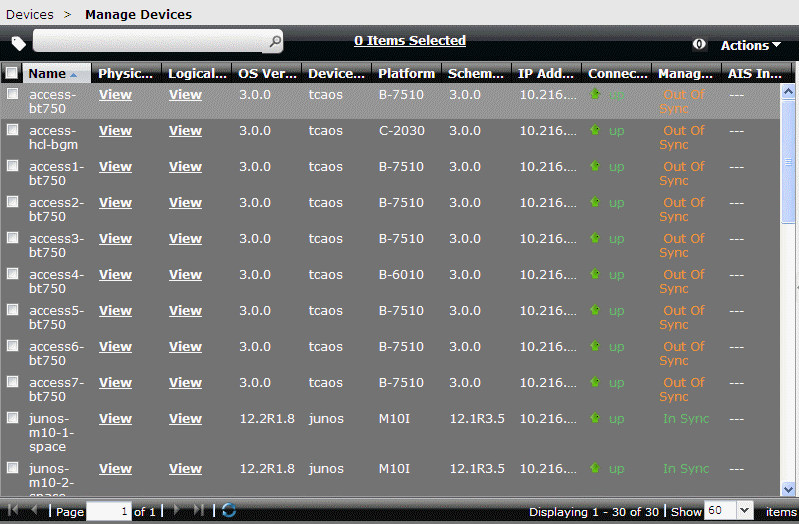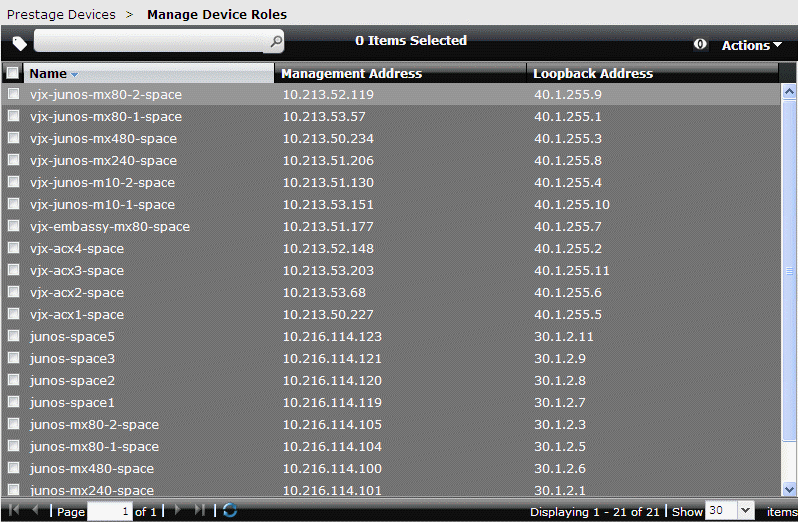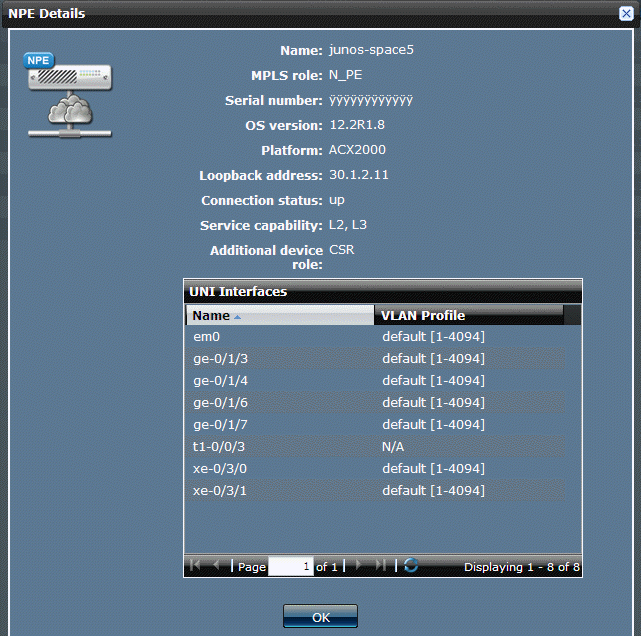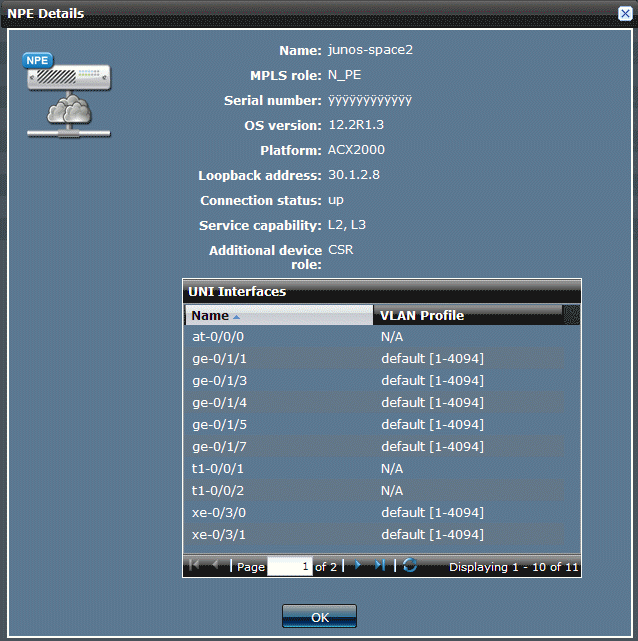Prestaging ATM and TDM Pseudowire Devices
Junos Space supports ATM and TDM pseudowires in IP/MPLS networks on M Series Multiservice Edge Routers with Circuit Emulation Service (CES) Physical Interface Cards (PICs). The ATM and TDM pseudowires run over an LSP connection.
Static pseudowires are designed for networks that do not support
LDP or do not have LDP enabled. You define pseudowires by configuring
static values for the inbound and outbound labels of the connection.
For details on configuring pseudowire connections in Junos OS, see
the Junos OS VPNs Configuration Guide
Prerequisites for M Series Routers
One of the following CES PICs is required:
4-Port ChOC3/STM1 CES PIC
12-Port T1/E1 CES PIC
Prerequisites for the BX Series Gateway
The BX Series devices have a fixed configuration with 3 Gigabit Ethernet (GE) interfaces and 16 T1/E1 ports that can be used by ATM/TDM pseudowire services. The correct level of firmware is required. Refer to the release notes that correspond to the release of Junos Space that you are running for the correct level information.
RFCs Supported
RFC 4553, Structure-Agnostic Time Division Multiplexing (TDM) over Packet (SAToP)
Before discovering and assigning N-PE devices, you must have already have run device discovery. See the “Discovering Devices” section in the Junos Space Network Application Platform User Guide.
When you run the discovery process for ATM and TDM devices, they need to be discovered as N-PE devices. In addition, the BX Series devices require an additional device role defined as a cell site router (CSR). This figure shows the discovered devices.

After you discover the devices, use Connectivity Services Director Prestaging feature to bring the PE and CSR devices into Network Services together with their UNI interfaces. In the Network Services > Connectivity task pane, select Prestage Devices > Manage Device Roles.

Double-click a listed device. In this example; you can see that an MPLS role and an additional device role as a CSR are assigned.

Double-click another listed device. In this example, the details window shows the channelized ATM and T1 interfaces.

